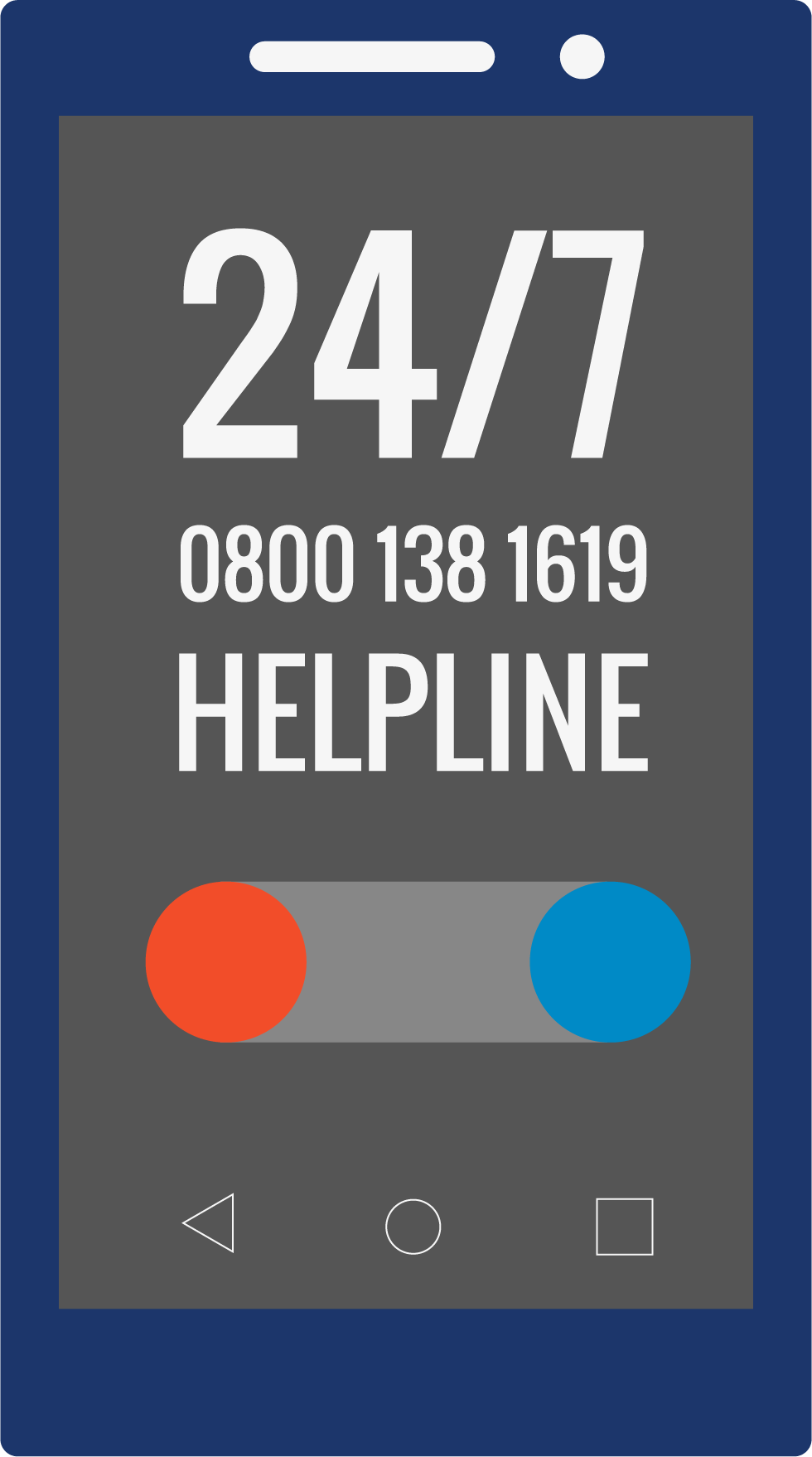Trauma-focused Therapies

Trauma-focused therapy
What is it and how does it help?
Introduction to Trauma-focused therapy
At Combat Stress, we understand the importance of having access to the best course of trauma-focused therapy to suit your individual needs.
Every trauma-focused therapy works in a different way, and it’s important to have access to the one that is best suited to you. When deciding which course of trauma-focused therapy is best for a veteran, our clinicians will consider what treatments have been shown to work through research, veteran experiences and choice.
We offer multiple trauma-focused therapies including Cognitive Behavioural Therapy (CBT), Narrative Exposure Therapy (NET), Prolonged Exposure, Eye Movement Desensitisation and Reprocessing (EMDR) and Cognitive Processing Therapy (CPT)
What is trauma-focused therapy and how can it help?
The nature of some traumas means that our brains don’t process them in the same way they process everyday events. After experiencing a trauma, people may avoid thinking about it due to it creating ongoing distress.
As a result of these responses, trauma memories aren’t stored in the same way typical events are and can cause post-traumatic stress disorder (PTSD).
Trauma-focused therapy provides a safe space to process traumatic events. The aim of trauma-focused therapy is to enable the brain to store trauma memories as past experience, allowing the individual to move forward.
Types of trauma-focused therapy for veterans?
Trauma- focused Cognitive Behavioural Therapy (TF-CBT) is a type of Cognitive Behavioural Therapy which addresses symptoms of trauma such as the relationship between feelings, thoughts and behaviours.
TF-CBT has been shown to be effective in treating post-traumatic stress disorder, and is usually administered over 8 to 12 sessions, with each session lasting between 60 to 90 minutes.
Sessions involve talking about traumatic events in detail and addressing any unhelpful beliefs attached to them. Processing the events in a safe place means that the intensity of the emotions attached to them will decrease. You can then start to re-evaluate the meaning of the trauma memory and see it in a more productive light.
The goal of TF-CBT is for you to regain a sense of control, self-confidence and stability, and reduce avoidance behaviours you may have developed. A key element of TF-CBT is to apply the changes in thinking you learn during your sessions to your everyday life, which is often completed between session work.
Certain types of trauma therapy require you to identify the traumas that are particularly distressing to think about, or that you re-experience the most (this may be through nightmares and intrusive memories).
Some veterans will find it hard to pinpoint key incidents and might feel that their symptoms can be traced back to many traumas from throughout life (including childhood and life after the military). In cases like this, narrative exposure therapy (NET) is a helpful approach.
Your first sessions may include you talking about, in loose detail, each significant event you have experienced, from birth to the present day. String is laid out on the floor to represent your life, also known as a ‘lifeline’. Different items are then used to represent different types of events – flowers for positive events, stones for traumatic events, sticks for acts of violence and candles to mark losses. At the end of this session, you and your therapist will take a photo of the lifeline and carefully pack it away.
Each session will be spent discussing a different event that holds particular significance. At the end of each session, your therapist will write a summary of the part of your life you discussed during that session. This will be read back to you in the following session before you move on to the next significant event.
At the end of your therapy, you will be given a written ‘narrative’, summarising your experiences from birth to the present day, and detailing hopes for the future. You can take this narrative home and use it in any way you like
Certain types of traumatic events can cause high levels of anxiety when you’re reminded of them, such as events where your life was in danger or where you were at risk of being seriously injured (also known as fear-based trauma).
When you experience these, you may find that you try to avoid any memories of the event, so you don’t have to experience the anxiety that comes with it. Although avoidance may work as a short-term strategy, it can often cause anxiety to increase each time you’re exposed to the memory or a reminder.
Prolonged exposure involves gradually confronting the trauma memory by talking about it in detail with your therapist. This will be done as many times as it takes for the anxiety to reduce. The end goal of this treatment is for your anxiety to reduce over time during exposure – a process called ‘habituation’.
You’ll be asked by your therapist to identify an end goal (for example this could be being able to watch an old war film), creating several graded steps to reach as you progress. In between sessions, you might be asked to continue the work by listening to a recording of the previous session for extra exposure. You will also purposefully encounter some reminders of the trauma and try to resist the urge to avoid them.
At various points during your treatment (when talking about the trauma, listening to recordings and facing reminders), your therapist will ask you to rate your anxiety. Your therapist will then use these ratings to know when your anxiety has reduced enough to move on to the next step
Eye movement desensitisation and reprocessing (EMDR) is an evidenced based psychological therapy used to treat post-traumatic stress disorder (PTSD). EMDR is suitable for individuals having trouble adjusting to traumatic events.
EMDR focuses on helping individuals adjust to past traumatic events, current triggers and also desired behaviour (this can include the ability to make better choices or cope more effectively).
Before engaging in any EMDR sessions, your therapist will make sure that it’s the right choice for you. EMDR can cause strong feelings and difficult thoughts, but it’s important to note that, if these do occur, it’s typically for a short period of time. During sessions, you’ll remain in control, and can stop the process at any time. Your therapist will also help you understand your existing coping strategies and develop them further to manage any distress between sessions.
During sessions, you’ll focus on an experience which is troubling you while engaging in Bilateral Stimulation (BLS). This can range from following your therapist’s fingers from left to right, tapping left and right, using hand-held buzzers and/or listening to alternating sounds.
Thinking about the distressing experience while following BLS results in the memory losing its intensity. This doesn’t mean that the memory is forgotten, but that it’s no longer troubling – in other words, it has been ‘desensitised’ and ‘reprocessed’.
Cognitive Processing Therapy (CPT) is a type of cognitive behavioural therapy used to treat post-traumatic stress disorder and is particularly effective for veterans with extensive trauma histories.
CPT is usually administered over the course of 12 sessions and involves learning how to challenge and modify unhelpful beliefs surrounding trauma events. At the start of treatment, you’ll learn about PTSD, thoughts and emotions. You’ll also be asked to write an impact statement describing why you think the trauma event occurred, and the impact this had on your beliefs about yourself, others and the world around you.
Following sessions will involve processing the traumas through talking about or writing a detailed account of each experience. Your therapist will help you develop skills to identify and change any unhelpful thoughts relating to the trauma.
A key aspect of CPT is using the skills you’ve learned to address and modify any unhelpful thoughts that appear outside of your sessions to improve day to day functioning.
Which trauma-focussed therapies do we offer at Combat Stress?
The trauma-focused therapies we offer at Combat Stress include Cognitive Behavioural Therapy (CBT), Narrative Exposure Therapy (NET), Prolonged Exposure, Eye Movement Desensitisation and Reprocessing (EMDR) and Cognitive Processing Therapy (CPT).
How do we ensure quality treatment?
At Combat Stress, we assess the individual needs of each veteran to find the best course of treatment. We consider what treatments have been shown to work through research, veteran experiences and choice. Some veterans may prefer therapy that involves more talking, others might prefer therapies that can be provided with less talking, while others may be drawn to therapy that involves making a representation of their memories.
As a charity we track the quality of our clinical service closely using data collected from veterans receiving treatment from us. The information we collect shows whether veterans are recovering and directly informs our trauma-focused therapies. This allows us to understand what works best for whom and maximise the effectiveness of treatment.
Accessing our services

Our Helpline is available to a veteran’s family members, friends and support network for confidential mental health help and advice.
Free 24-hour Helpline 0800 138 1619
You can also text on 07537 173683
and email helpline@combatstress.org.uk
Standard charges may apply for texts, please check with your provider.
With the veteran’s consent, our other family services are available to adult family members / supporters.
To find out more about our family support, please contact Dave Aitken, Head of Engagement and Social Care, on dave.aitken@combatstress.org.uk
